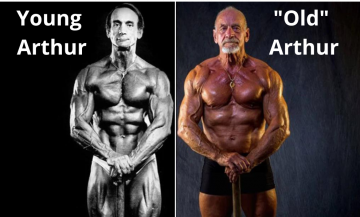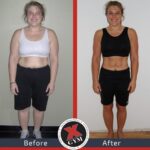 We haven’t found the mythical fountain of youth yet, but many are still (figuratively) trying, mostly with futile stabs in the dark at fad diets, “miracle” supplements, and other “shortcuts” that don’t require much effort.
We haven’t found the mythical fountain of youth yet, but many are still (figuratively) trying, mostly with futile stabs in the dark at fad diets, “miracle” supplements, and other “shortcuts” that don’t require much effort.
Well, if you’re one of those people, how’s that going for ya?
The bad news is: effort-free schemes are merely scams.
The good news is: there is a way to achieve the youthful vigor we all seek, even if we aren’t a “youth” anymore, thanks to muscle quality improvements, involving muscle density, mitochondria health, telomere lengths, stem cell activation, and cardiovascular benefits.
The X Gym has the best hack for achieving all this, thanks to our time-saving methodology. It is also the safest methodology, making it attainable for any age.
Remember the video of John doing 81 pushups on his 81st birthday? Yeah, he can also do a 5-minute plank. Try that, Z Gens!
Remember who still holds the “air chair” record at the X Gym of 4 minutes (regardless of age or gender)? Hint: She’s a woman. And she’s 85. And, by the way, I just interviewed her yesterday about her 100-mile hike in Spain. That story will be coming out in our next newsletter. For other great stories like that, including Xclusive tips, tricks, and hacks, sign up for that by clicking here.
- Poor muscle quality increases the probability of poor metabolic health, which increases the possibility of cancer, dementia, Alzheimer’s, heart disease, and autoimmunity.
- Low muscle quality increases your odds of dying prematurely.
- Differences in mid-life leisure can positively reduce the risk of impaired mobility in your older age.
- Fat can accumulate within and outside the muscle, leading to functional decline and muscle quality.
- Aging is associated with a decline in muscle and strength, starting in your 30s and 40s.
- Strength and Muscle loss happens up to 3% per year without proper exercise. The decline in muscle power is even greater.
- The intermuscular (between muscles) and intramuscular (within the muscle) fat accumulation underpins poor muscle quality and causes insulin resistance within the muscle.
- Doing resistance training to failure (i.e. CMF) a few days per week helps to preserve fast twitch muscle fibers that generate force and strength.
- Fast twitch muscle fibers (type 2b fibers) are recruited during high-intensity activity, such as with our methods, which take people to CMF.
- Type 1 muscle fibers are recruited during low-intensity activity, such as with our methods, which incorporate TUT.
- Be explosive in your training (i.e. our Tierendos, Ratchets, and Midstops methods). Your last rep should be challenging (i.e. CMF).
- The neuronal aspect of your muscle, high force motor units, becomes dysregulated first, but with our intensive control, nerves are trained just as much (if not more) than the muscle fibers.
- Muscle architecture improvements are possible with just 4 to 5 weeks of regular resistance training. This precedes changes in muscle size.
Studies:
https://cardiab.biomedcentral.
and
https://www.metabolismjournal.









